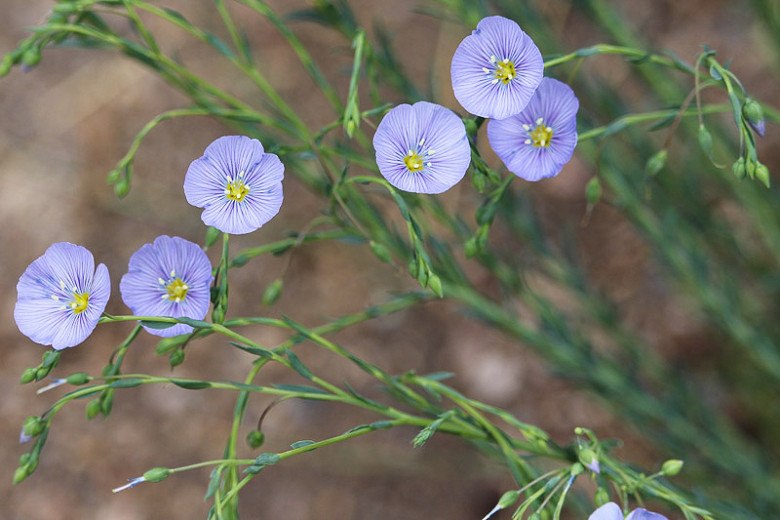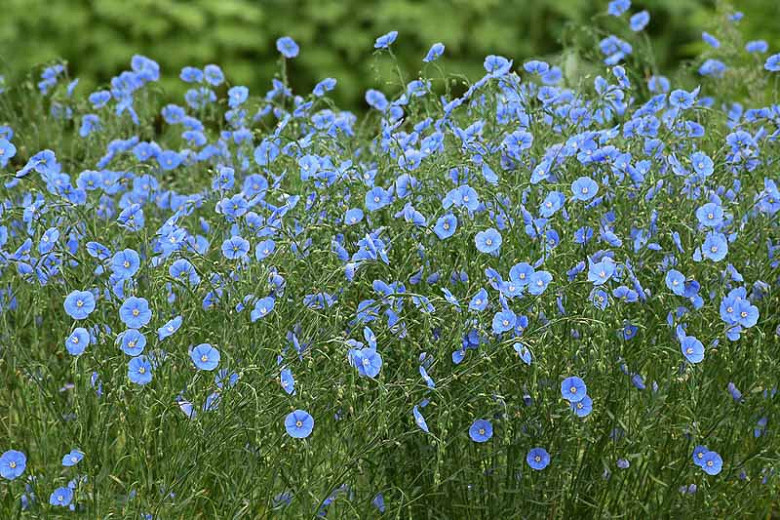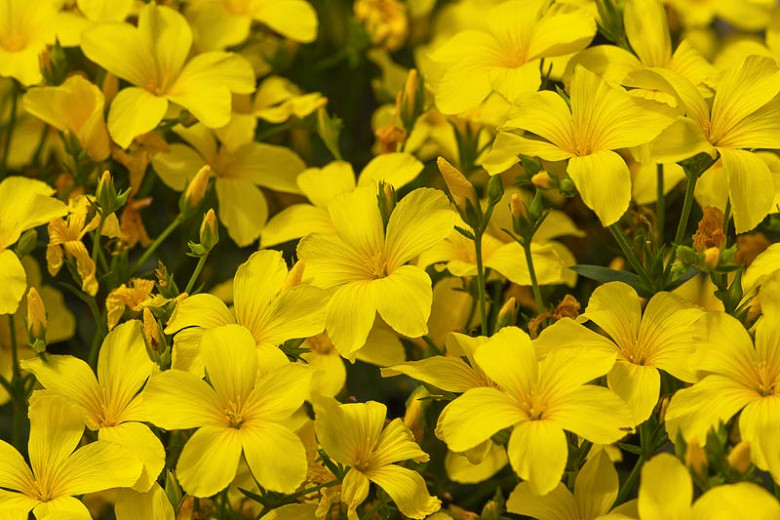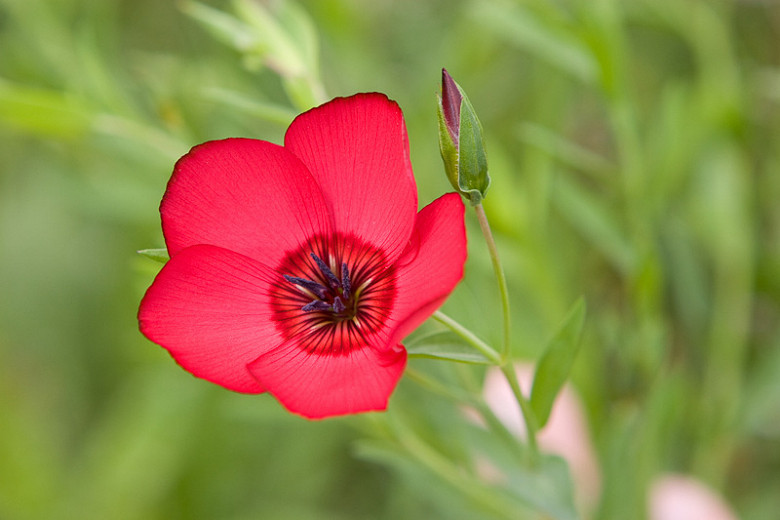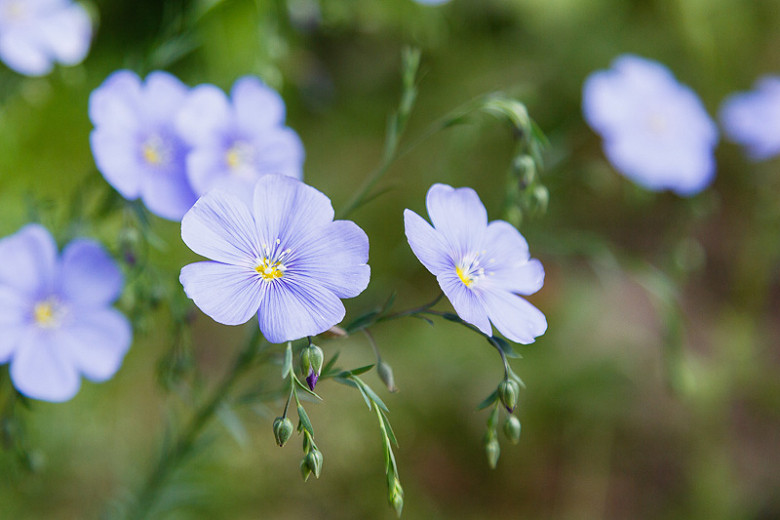Linum lewisii (Prairie Flax)
Linum lewisii (Prairie Flax) is a showy perennial forming tufts of spirally arranged, narrow blue-green leaves. It smothers itself in pale blue saucer-shaped flowers, 1 in. across (2.5 cm), veined in darker blue.
Linum lewisii (Prairie Flax) is a showy perennial forming tufts of spirally arranged, narrow blue-green leaves. It smothers itself in pale blue saucer-shaped flowers, 1 in. across (2.5 cm), veined in darker blue. Blooming for weeks from late spring to midsummer, the flowers open in the morning and last for only one day, but the plant flowers profusely, making up for the short bloom time. They are borne atop wiry stems, which are leafy when the plant is young, gradually losing most of their leaves as they mature. Prairie Flax lasts only a few years but will self-sow once established, keeping its presence in the garden. Heat and drought tolerant, Prairie Flax is an excellent addition for rocky gardens, sunny garden paths, or containers.
- Grows up to 24-26 in. tall (60-65 cm) and 18-24 in. wide (45-60 cm). Freely self-seeds when happy.
- Thrives in full sun to part shade in average, medium moisture, well-drained soils.
- Easy to grow, Linum lewisii (Wild Blue Flax) is a good choice for areas of the garden that are hot and dry.
- No serious insect or disease issues. Keep an eye out for slugs, snails and aphids. Deer resistant.
- Cut back the top half of the plant after bloom unless thousands of seedlings are desired.
- Propagate by seed.
- Native to the western U.S. and Canada.
Requirements
| Hardiness | 3 – 9 |
|---|---|
| Climate Zones | 2, 2A, 2B, 3, 3A, 3B, 4, 5, 6, 7, 8, 9, 10, 11, 12, 14, 15, 16, 17, 18, A1, A2, A3 |
| Plant Type | Perennials |
| Plant Family | Linum – Flax |
| Exposure | Full Sun, Partial Sun |
| Season of Interest | Spring (Late)Summer (Early,Mid) |
| Height | 2' – 3' (60cm – 90cm) |
| Spread | 1' – 2' (30cm – 60cm) |
| Spacing | 18″ – 24″ (45cm – 60cm) |
| Water Needs | Average |
| Maintenance | Low |
| Soil Type | Chalk, Loam, Sand |
| Soil pH | Acid, Alkaline, Neutral |
| Soil Drainage | Well-Drained |
| Characteristics | Showy |
| Native Plants | United States, Alaska, California, Midwest, Kansas, Michigan, Minnesota, Nebraska, North Dakota, South Dakota, Pacific Northwest, Idaho, Oregon, Washington, Rocky Mountains, Colorado, Montana, Utah, Wyoming, Southeast, Arkansas, Louisiana, West Virginia, Southwest, Nevada, Arizona, New Mexico, Oklahoma, Texas |
| Tolerance | Deer, Drought, Dry Soil, Rocky Soil |
| Attracts | Birds, Butterflies |
| Garden Uses | Beds and Borders, Patio and Containers |
| Garden Styles | Gravel and Rock Garden, Informal and Cottage |
